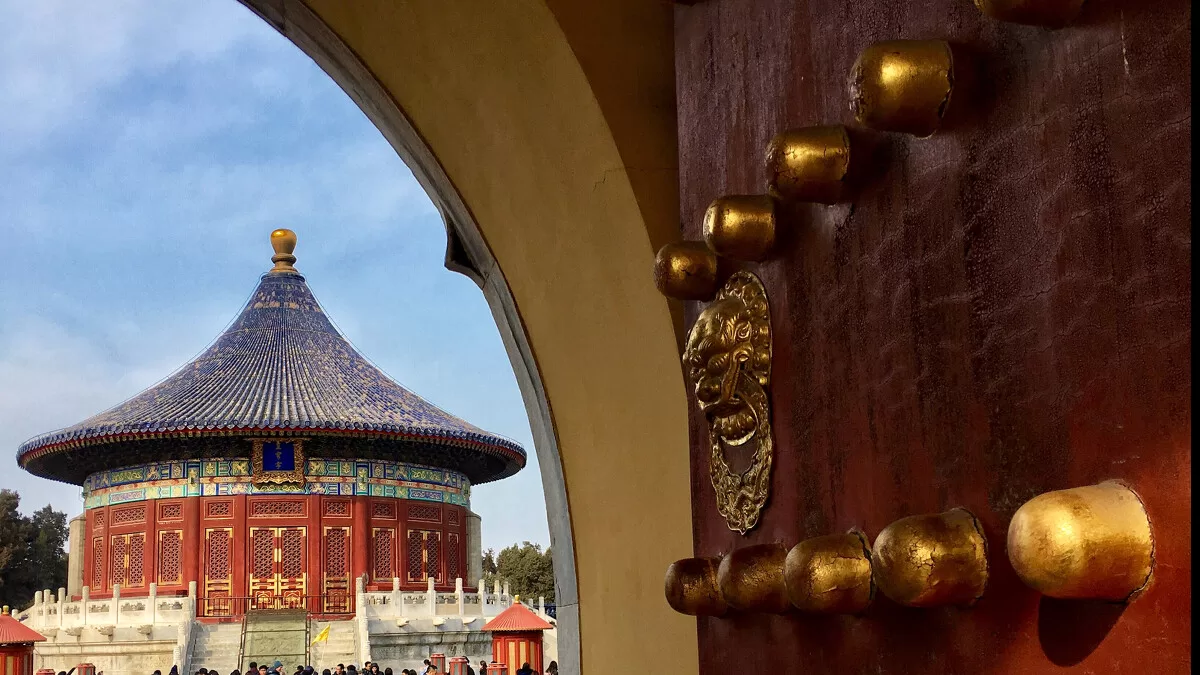The Imperial Vault of Heaven (皇穹宇) is a significant architectural structure located within the Temple of Heaven complex in Beijing, China. It is renowned for its historical and cultural significance, as well as its remarkable design and intricate details.
Historical Background: The Temple of Heaven, a UNESCO World Heritage Site, was constructed during the Ming Dynasty in 1420 and expanded in the Qing Dynasty. The complex was primarily used by the emperors of the Ming and Qing dynasties for the worship of heaven and to pray for good harvests. The Imperial Vault of Heaven served as a key structure within this sacred site.
Location: Situated in the southern part of the Temple of Heaven complex, the Imperial Vault of Heaven is positioned on a raised white marble terrace. It is located directly to the north of the Circular Mound Altar and south of the Echo Wall and the Hall of Prayer for Good Harvests.
Architecture: The Imperial Vault of Heaven is a circular building, featuring a single-story structure with a triple-eaved roof. The overall architectural style adheres to traditional Chinese design principles. The circular shape symbolizes the heavens, reflecting the belief that the heavens were round and the earth square.
Structural Features:
- Exterior: The vault is surrounded by a high, circular, white marble wall, measuring around 6 meters (20 feet) in height. The wall is adorned with vibrant blue roof tiles and intricate carvings depicting dragons, clouds, and celestial symbols. The colors used in the construction hold symbolic meaning, with blue representing the heavens.
- Roof: The triple-eaved roof is covered with deep blue-glazed tiles, which represent the color of the heavens. Each roof is adorned with upturned eaves that curve gracefully, showcasing traditional Chinese architectural elements.
- Center Hall: The main hall of the Imperial Vault of Heaven is known as the Circular Mound Hall. It features a wooden, octagonal, coffered ceiling decorated with vibrant colors and intricate patterns. The hall houses a stone tablet, called the “Qianlong Stone,” which bears the calligraphy of Emperor Qianlong of the Qing Dynasty.
- Circular Wall: Surrounding the Circular Mound Hall is a circular wall with a diameter of approximately 32 meters (105 feet). The wall is built of brick and is embellished with beautiful carvings of animals and heavenly symbols.
- Marble Terrace: The entire structure is elevated on a white marble terrace, which is accessed by a flight of stairs. The terrace adds to the grandeur of the vault and provides a picturesque view of the surrounding area.
Symbolism and Significance: The Imperial Vault of Heaven holds profound cultural and religious symbolism. It was believed to be the place where the emperors communicated with the gods and prayed for a bountiful harvest. The circular shape represents heaven, while the square base of the vault symbolizes earth. The layout of the Temple of Heaven complex, with the Circular Mound Altar to the south and the Imperial Vault of Heaven to the north, reflects the ancient Chinese concept of a round heaven and a square earth.


